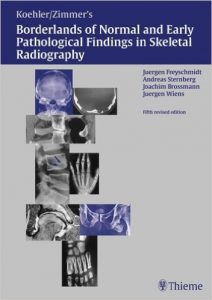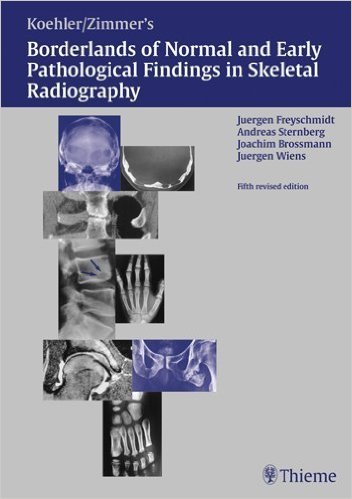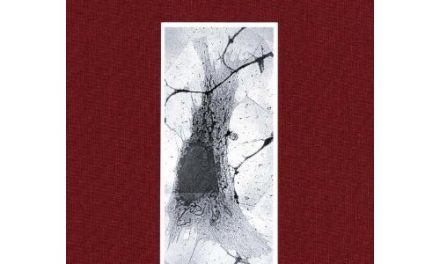 Authors: Juergen Freyschmidt, MD; Joachim, Brossmann, MD; Juergen Wiens, MD; and Andreas Sternberg, MD
Authors: Juergen Freyschmidt, MD; Joachim, Brossmann, MD; Juergen Wiens, MD; and Andreas Sternberg, MD
Foreword: Donald Resnick, MD
Publisher: Thieme – 1,120 pages, with 4,206 illustrations, 74 Tables
Book Review by: Nano Khilnani
Is a given patient on the borderland of normal and pathologic when it comes to his or her bone structure? This book will help you answer this question and get much more detailed information.
Basically, five pathologic processes are searched for by physicians when looking at images in skeletal radiography, writes Dr. Donald Resnick in his Foreword to this book. They are: dysplasia, inflammation, necrosis, trauma, and tumor. And the all-important first question that needs to be answered when examining radiographs is: does it appear to be normal or pathologic?
This large-size as well as lengthy book contains more than 1,100 pages and over 4,200 images. There is a whole lot of material to go through no doubt, but for those who have studied any of its past four editions, the task is not so daunting. The main reason is that the material in this book is superbly organized, and very easy to find the specific information you are looking for.
“This latest edition is true to its tradition of excellence that was readily apparent in the previous version,” Dr. Resnick writes. What is different in this latest edition published in 2003 is that it contains a lot of additional information, since the previous (fourth) edition was published about 50 years ago in 1956.
What will you find covered in this book? We give you below a broad overview of its contents:
- Introduction to the Radiological Evaluation of Normal Variants
- Upper Extremity: The Hand, Forearm, Elbow Region, Upper Arm
- Shoulder Girdle and Thorax: Scapula, Acromioclavicular Joint, The Shoulder Joint as a Whole, Clavicle and Sternoclavicular Joint, Sternum, Ribs
- Skull: Cranial Vault, Skull Base, Facial Skeleton,
- Spinal Column: Atlas and Axis, Midcervical and Lower Cervical Spine, Thoracic Spine, Lumbar Spine, Sacrum and Coccyx, Sacroiliac Joints
- Pelvis
- Lower Extremity: Femur, Patella, Proximal Tibia and Fibula, Knee Joint as a Whole, Shaft of the Tibia and Fibula, Distal Tibia and Fibula, Foot
“This fifth edition of Borderlands is based on a new didactic approach, which is intended to give the book an unprecedented consistency throughout. The material is organized according to the basic diagnostic questions that are raised by the primary clinical findings, the primary radiographic findings, or both,” write the authors of this book named above, in their Preface.
Here are some points they make about the characteristics of borderline findings in skeletal radiography:
- They are difficult to collect for publication because:
- They were either missed, or
- The radiographic examination was performed too late
- They can be difficult to portray in an illustration as it is not possible to bring out certain relevant details by changing the viewing conditions (e.g. by using an iris diaphragm with a halogen source for reading a plain film or by adjusting the computer screen)
Because of the above-stated difficulties, this book deals with pathological conditions in their fully established form. This way the radiologist can picture earlier forms in their “borderlands” range.
So to summarize these items in the content, and other benefits for you, of owing this valuable volume, these are its important features:
- Lavishly illustrated with more than 4,200 images – radiographs, drawings, photos – nearly four per page
- Providing a valuable combination of normal, borderline, early, and late pathologic findings
- New format reflecting the situations you will encounter in clinical practice
- Valuable “pearls” highlighting special features and rare items: a unique benefit
- Exhaustive analysis of borderline findings for both pediatric and adult cases
This an encyclopedic resource of information, knowledge, and compendium of insight of the authors on skeletal radiology.
Editors:
Juergen Freyschmidt, MD is Professor and Director of the Division of Diagnostic Radiology and Nuclear Medicine Zentralkranhaus Sankt-Juergen-Strass in Bremen, Germany.
Joachim, Brossmann, MD is Professor in the Division of Diagnostic Radiology at Hospital of the University of Kiel, in Kiel, Germany.
Juergen Wiens, MD is affiliated with the Division of Diagnostic Radiology and Nuclear Medicine Zentralkranhaus Sankt-Juergen-Strass in Bremen, Germany.
Andreas Sternberg, MD is affiliated with the Division of Diagnostic Radiology and Nuclear Medicine Zentralkranhaus Sankt-Juergen-Strass in Bremen, Germany.
Foreword:
Donald Resnick, MD is Chief of Osteradiology and Professor of Radiology at the University of California in San Diego, California.







